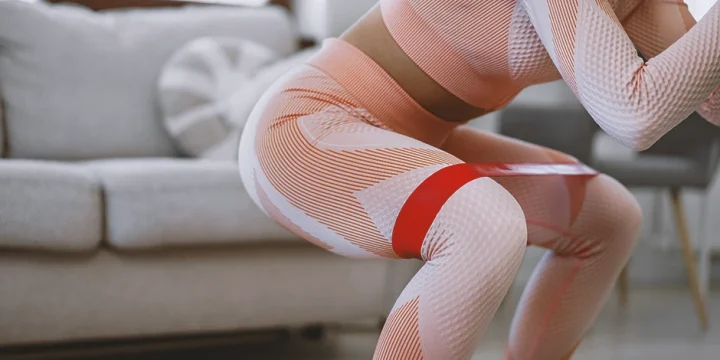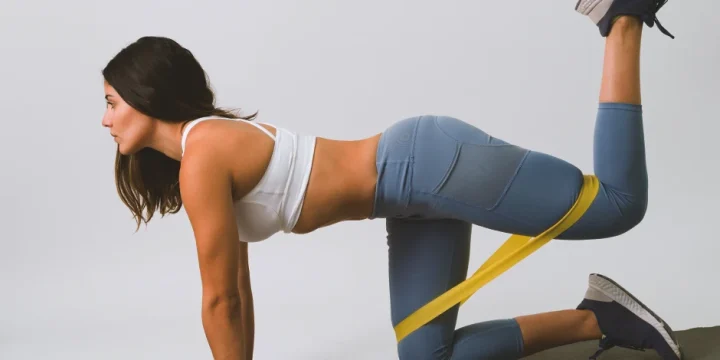Knee arthritis can impair mobility, but exercises like kickbacks and leg lifts may strengthen the muscles surrounding the joint and keep you active.
There are many exercises that you can perform if you have arthritic knees.
As a certified fitness trainer, I went through a vast amount of research to know more about arthritic knees and to find the best exercises you can perform if you have the condition.
Upon testing many exercises with my clients, I came up with a list of a few that stood out as the best.
This article will provide my expertise and findings on the best exercises for arthritic knees and tips for starting the workouts.
Quick Summary
- Some of the best exercises for arthritic knees include straight leg raises, hamstring stretches, kickbacks, the calm, calf stretches, and sit-to-stand.
- It's crucial to choose exercises that don't put excessive strain on the knees, focusing on strengthening the muscles around the joint.
- The National Institute of Health suggests low-impact activities like stationary cycling and water training to alleviate joint tension and applying heat through warm towels or showers for 20 minutes to relax muscles and joints.
- In my opinion, regular, gentle exercise is often more effective and sustainable for managing arthritic knee pain than aggressive workout routines.
The Best Exercises for Arthritic Knees

Straight Leg Raise
Strengthen your muscles to assist in supporting your joints.
How to perform:
- Lie on the ground with your elbows supporting your upper body. Bend the left knee and place your foot on the ground.
- Maintain a straight right leg with toes pointing up.
- Tighten the muscles in your thighs and elevate your right leg.
- Pause for three seconds. Maintain a strong grip on your thigh muscles and gently lower your foot.
- Touch and elevate once more.
- Perform two sets of ten repetitions. Switch legs after each set.
Learn More: How to Do Hanging Leg Raises
Hamstring Stretch
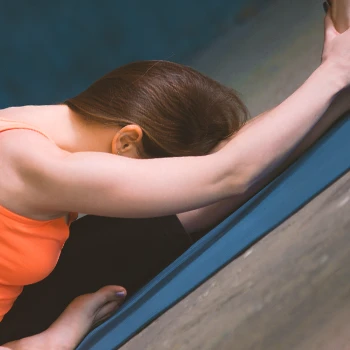
This stretches and develops the hamstrings, the muscle groups on the backs of your thighs that connect to your knees.
How to perform:
- Lie on the ground or on your bed with your knees bent.
- Slowly raise one bent leg and bring it back near your chest.
- Straighten your leg by linking your hands behind the thigh muscles, not your knee.
- Pull the straight foot back toward the head until the stretch is felt.
- Hold for thirty to sixty seconds before bending your knee and lowering your leg to the floor.
Also Read: Seated Hamstring Stretches In Chair
Kickbacks
This exercise is excellent for strengthening leg muscles and decreasing knee stiffness.
How to perform:
- Start standing with your legs straight.
- Lift one foot and move the heel toward the buttocks by bending the knee.
- Hold for two seconds before lowering the leg.
- Knees should be aligned, and posture should be straight.
- Repeat ten to twenty times per session.
- Perform these exercises several times every day.
Related: How To Do Cable Kickbacks
The Clam
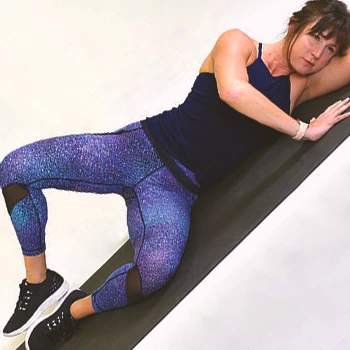
The lying-down clam exercise strengthens the buttocks. It targets the glutes.
Weak glutes frequently cause knee soreness, at least partly because they cause the knee joints to absorb too much force. Less strain is placed on the knees as a result of buttock strength.
How to perform:
- Lie on your side.
- Align the shoulders, pelvis, and feet, having your hips and knees bent at 90 degrees.
- Maintain a tight foothold.
- Raise the top knee as high as possible, then gradually lower it.
- Repeat on the opposite side while holding a stretch for three to five seconds.
- Do this ten to twenty-five times daily.
Calf Stretch
Exercises for the calf will keep your ankle and lower leg flexible, enhancing your balance and gait.
How to perform:
- Face the wall with your feet flat on the ground.
- Place one foot in front of you and one leg behind you.
- For support, place both hands or forearms on the wall.
- While keeping your heel of the foot firmly planted on the ground, slowly bend the front knee.
- Hold the position for 30 seconds after you feel a stretch in the calf muscle at the rear of your ankle.
- Perform three repetitions once daily.
Sit to Stand
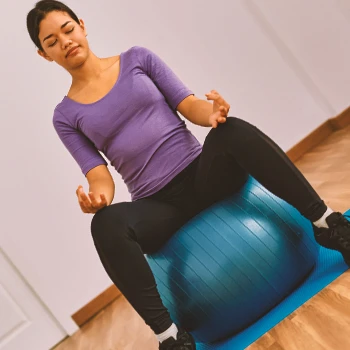
Practice this motion to make standing simpler.
How to perform:
- Put two cushions on a chair. Sit on the top with both feet flat on the ground and your back straight.
- Use the leg muscles to smoothly and slowly stand tall.
- Then descend again to sit.
- Make sure your toes don't extend past your bent knees.
- Try holding your arms loosely at your sides or crossed.
Tips for Starting These Exercises

“There's no need to swim for miles or run a marathon. Even light exercise can reduce discomfort and maintain a healthy weight. In other words, exercising can keep you going even while arthritis wants to slow you down.”
- Lauren Jarmusz, Orthopedic Clinical Specialist & Physical Therapist
As a trainer, I advise starting cautiously if you haven't worked out in a while. Pushing yourself too hard can overwork muscles and aggravate joint discomfort.
Here are some tips to consider:
- Maintain a modest impact. According to the National Institute of Health (NIH), low-impact workouts help to reduce joint tension when moving [1]. Examples are stationary or recumbent riding, elliptical trainer sessions, and water training.
- Move slowly. Warm up your joints by moving them lightly at the beginning. Start with 5 to 10 minutes of range-of-motion exercises before moving on to cardio or strengthening exercises.
- Make use of the heat. As noted by the NIH, the heat helps relax joints and muscles, reducing discomfort before activity [2]. Warm towels, hot packs, or a shower can be used to deliver heat. The temperature ought to be warm but not scorching. Apply for approximately 20 minutes.
- Go slowly. Slow and gentle motions are ideal for exercise. Pause if you are in pain. Sharp discomfort and greater knee pain than normal joint pain may indicate something is amiss. If you see redness or swelling in your joints, slow down.
- Ice afterward. After exercise, apply ice to the joints for a maximum of 20 minutes. This, according to the NIH, is especially beneficial if the joints are swollen [3].
Nutritional Support for Joint Health
To support joint health and alleviate the symptoms of arthritic knees, a diet rich in anti-inflammatory foods is key.
- Incorporate omega-3 fatty acids found in fish like salmon and flaxseeds, which can reduce joint inflammation.
- Foods high in antioxidants, such as berries, leafy greens, and nuts, combat oxidative stress that can exacerbate arthritis.
- Turmeric and ginger are also beneficial for their anti-inflammatory properties.
- For supplements, glucosamine and chondroitin are popular for joint health, potentially aiding in cartilage repair and reducing pain.
- Vitamin D and calcium are crucial for bone strength.
- Hydration is essential, as water helps keep joints lubricated.
Always consult with a healthcare provider before starting any new supplement regimen, especially if you have underlying health conditions or are taking other medications.
FAQs
What Exercises Should I Avoid With Arthritis in My Knees?
With arthritis in your knee, you should avoid squatting, running, repeated jumping, contact sports, and walking or running upstairs.
Is Walking Good for Arthritis in the Knee?
Yes, walking is good for arthritis in the knee. It's low-impact, keeps the joints flexible, promotes bone health, and lowers the chance of osteoporosis.
What Makes Knee Osteoarthritis Worse?
Too much stress on the joint will make knee osteoarthritis worse.
References:
- https://www.ncbi.nlm.nih.gov/pmc/articles/PMC1402378/
- https://pubmed.ncbi.nlm.nih.gov/25526231/
- https://www.ncbi.nlm.nih.gov/pmc/articles/PMC5339266/
About The Author
You May Also Like

